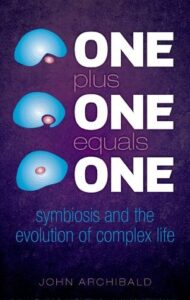 One Plus One Equals One, John Archibald
One Plus One Equals One, John Archibald
The origin of complex life is endlessly fascinating, and various evolutionary innovations made it possible. This book covers an extraordinarily important moment: symbiosis between existing cells which produced the organelles on which most cells rely. We wouldn’t get far without mitochondria producing ATP for us. And yet it’s been clear to me for a long time that mitochondria had a separate origin. Some of the DNA in our cells exists solely within our mitochondria. That DNA doesn’t even obey the same rules as the rest of our DNA when it comes to producing gametes.
For me, then, this book took something incredibly obvious and broke it down into more steps than I needed. It works to convince you that symbiosis could have occurred. But to me, that’s immediately apparent from the fact that some of our organelles have clear extra-cellular origins. So that aspect of the book was quite slow for me. It’s interesting to read about the research and the people who proposed the theory anyway, though. If you’re into biology and you don’t already know/accept that mitochondria were once free-living bacteria, this is interesting and illuminating!
On a related note (not addressed within the book), it makes me wonder… How do people who don’t believe in evolution handle the existence of mitochondria? They pretty clearly show evolution and co-evolution occurred in the genesis of complex life. If mitochondria weren’t free-living bacteria that adapted to living within simple cells, why do they have their own genetic material? Did God leave it in by accident?
Don’t answer that.

Leave a Reply